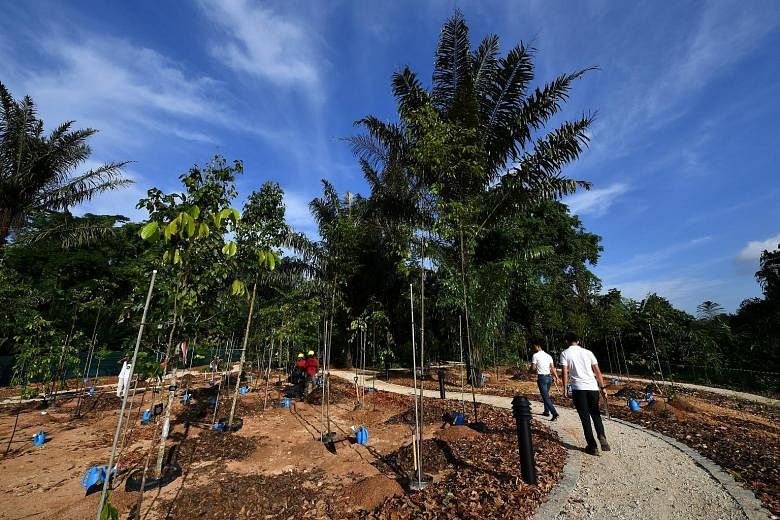Due to illegal logging and deforestation, the population of dipterocarps - iconic trees that constitute the backbone of the Indo-Malayan rainforests - has decreased over the years.
Many species in Singapore have also become critically endangered.
When it opens at the end of this year, the OCBC Arboretum in the Singapore Botanic Gardens will house an integrated suite of technological tools that will be employed to better track the climate, growth and conditions of these trees, and bolster efforts to conserve them, it was announced yesterday.
The arboretum will also serve as a test bed for new technological tools for tree maintenance that will be progressively rolled out across the island over the next five years.
It will showcase more than 200 species from the dipterocarp family of trees, which are also known as forest giants. About a fifth of them are native to Singapore.
It will be located in an 8ha extension to the Botanic Gardens, known as the Gallop Extension, which will also feature a hiking trail and galleries, and the facility will be the first such high-tech arboretum in South-east Asia.
OCBC Bank has contributed $4 million to the arboretum project as well as a new knowledge centre, which will conduct public education programmes.
Speaking at a tree-planting event where plans for the OCBC Arboretum were unveiled, Minister for Social and Family Development and Second Minister for National Development Desmond Lee noted that changing weather conditions are disrupting the growth of the dipterocarp trees, which are found only in tropical regions and serve as habitats for wildlife and other plants.
"We need to learn more about these trees so we can conserve them for generations to come."
The National Parks Board (NParks) says data on the trees - relating to climate, tree growth and tree health - in the arboretum will be gathered via a system known as the Ecological Network of Tree Sensors. A similar system is being used in the Australian capital, Canberra, to conserve eucalyptus trees.
First, 12 weather stations will be installed in the arboretum and be linked to an online network, which will be able to continuously record environmental variables that the trees in the arboretum are exposed to.
Another system that emits pulses of lasers and measures differences in their return times with a built-in sensor will be used to capture 3D maps of each tree at three-month intervals.
Finally, multispectral imaging, involving the use of a special camera equipped with multiple sensors, will capture changes in a tree's leaves which are an indicator of its overall health and condition. The camera will be mounted on a drone.
Previously, NParks officers had to go to every tree and measure them individually, said Mr Shee Zhi Qiang, director of horticulture and operations at the Botanic Gardens. "With these technologies, we will be able to instantaneously measure and detect anomalies in any of the trees and that will allow us to respond a lot faster to any problems," he said.
Researchers could use the data to produce a set of ideal growth conditions for the trees and to establish conservation guidelines for suitable habitats, he added.
"These lessons are not specific to dipterocarps alone, and are mostly transferable to other species," Mr Lee said.
For instance, by studying the conditions that cause trees to develop lusher crowns, NParks will be able to replicate these conditions at certain areas so that trees on the island can provide more shade.
The use of such digital tools and analytics is part of NParks' digitalisation road map for the next five years.


